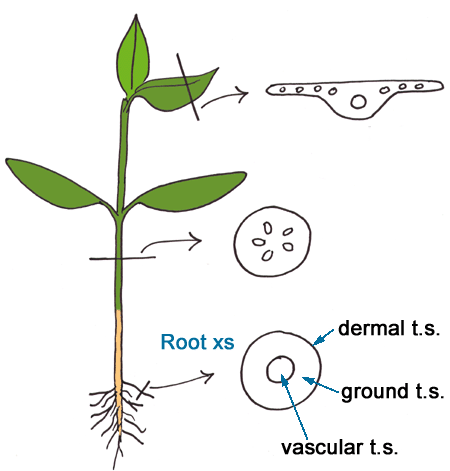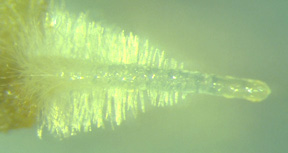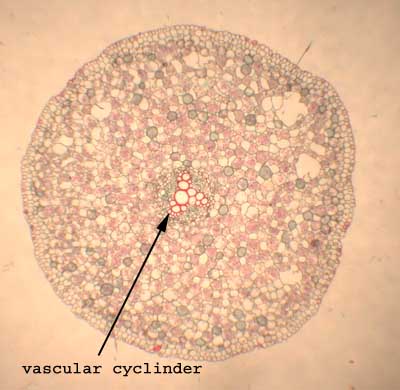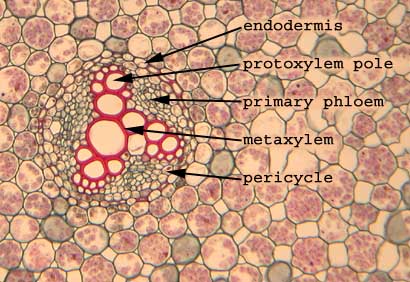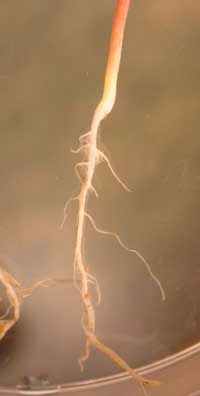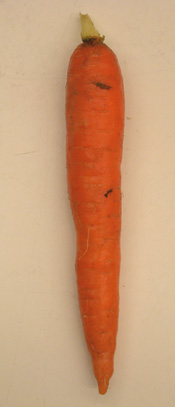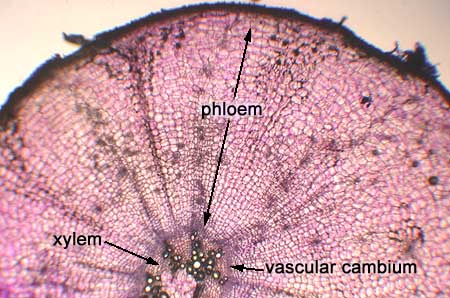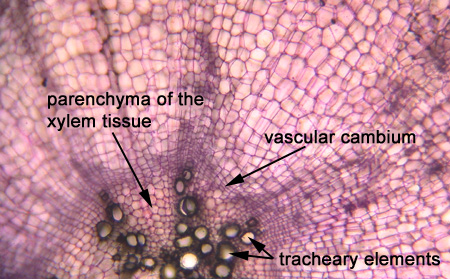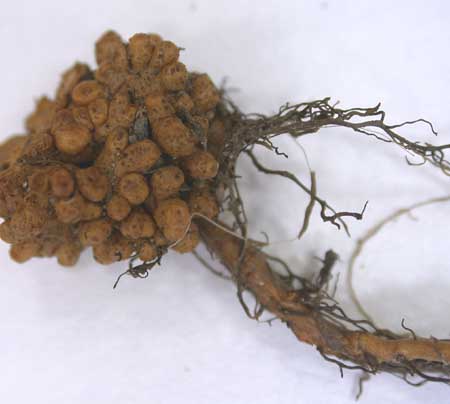Organization of Tissues into Tissue Systems
(i) Dermal Tissue System
Epidermis is the outer layer of the root. In the younger parts of the root, near the root tip, small extensions from the epidermal cells (root hairs) are important for absorption of water and minerals. As the roots grow, new root hairs are produced while the older ones lose their function and wither away. In parts of the root where vascular cambium is being generated cork replaces the epidermis.
(ii) Vascular Tissue System
The vascular tissue system is made up of a central cylinder of xylem and phloem.
(iii) Ground Tissue System
In roots the tissues of the ground tissue system are less variable than leaves and stems. For the most part it is comprised of parenchyma tissue which often has a storage function. In the root the region outside of the vascular cylinder is called the cortex (most roots do not have a pith).
| The arrangement of the tissue systems of the root is demonstrated in the figure below. |
| In the root tip you can see the root hairs which occur near the root tip. It is in this region that the metaxylem elements are maturing. It is also the region of absorption of water and ions. The tip of the root grows through the substrate (soil).The apical meristem is protected by a layer of cells called the root cap, which produces mucilage that helps to lubricate the passage of the root through the soil. As in stems, primary growth is responsible for this growth in length. |
| The xylem is in the very centre of the root. It can variously lobed with the phloem tucked in between the lobes (arms). Two other layers are evident. The endodermis regulates the movement of solutes and water into and out of the central cylinder. The pericycle is a layer of parenchyma which has numerous important functions. One of which is the site of lateral root formation. |
| Branching of the root occurs during primary growth. The radish root in shows lateral roots. This is a young seedling; as the plant grows the region between the root and the hypocotyl undergoes lots of secondary growth giving rise to the radish that we eat. |
| Secondary growth, as in stems, is the result of two lateral meristems. The vascular cambium is generated between the primary xylem and phloem as well as from cells of the pericycle to form a complete ring. The outer pericycle gives rise to the cork cambium. All plants that have secondary growth in their stems also have secondary growth occurring in the roots. Carrots (Daucus carota) are secondary roots. The carrot plant is a biennial; it accumulates nutrients and sugars over the first year of growth in the root and in the second year flowers, produces fruit, and then dies. |

